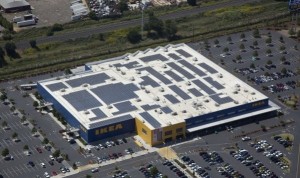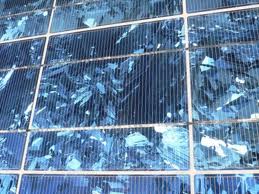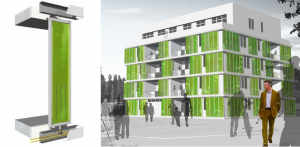This week’s five stories look at:
- What will happen to American investment in science and technology based on the outcome of this upcoming presidential election
- IKEA, the build-it-yourself furniture manufacturer revealing its plans to go 100% renewable by 2020
- A new initiative in Swansea, Wales, to create buildings that are their own power stations
- UC Santa Barbara researchers who have developed a smart material gel made from DNA and what it possibly means
- A new building being constructed in Hamburg, Germany, that has algae for walls.
As always I encourage you to comment, ask questions and provide input on topics I write about or feature. And should you come across an interesting technology or scientific breakthrough that you feel should be included in this blog please don’t hesitate to let me know. Enjoy the read!
Technology and Politics in the 21st Century: What Happens to Scientific Progress if Mitt Romney Becomes President
It has been interesting following the “non-science” and “nonsense” of this 2012 campaign for the White House. Science and technology may prove to be victims if Republicans win the presidency. Where President Obama has integrated science and technology into his economic strategy to get the United States back on track, Mitt Romney is a whole other ball of wax. He believes innovation is almost exclusively a private sector issue and government need not set a direction or be involved other than doing “basic research.”
Mitt Romney’s technology spend is heavily slanted to the military. His position on stem cell technology harkens to a return to the days of President George W. Bush. Those policies set stem cell therapy research in the United States back a decade.
And on global warming, although never mentioned by either candidate in the debates, there is a significant difference in point of view between the sitting president and his Republican opponent. Mitt Romney believes global warming is not a concern of the United States because taking action would give China and other global competitors an unfair advantage economically. Mr. Romney wants to see a relaxation of EPA rules for development of coal and other fossil fuel sources. He wants the government out of the business of funding potential new renewable projects.
For more on the candidates’ positions read the October 24, 2012 issue of Nature International Weekly Journal of Science.
IKEA Leads the Way with Pledge to 100% Renewable Energy by 2020
If you don’t have some IKEA furniture in your house today you are more an exception than the rule. The Swedish company for 25 years has set the standard for modular, do-it-yourself-at-home assembled furniture. With outlets in 41 countries the company wants to lower its energy costs and environmental footprint by deploying renewable power and engaging in conservation initiatives.
The plan is to make 70% of spent energy renewable by 2015 and become facility self-sufficient in energy generation by 2020. Currently IKEA warehouse outlets sport 342,000 rooftop solar panels generating 25% of the energy consumed by the company. To this they have added wind farms in 6 countries.
As for its conservation initiative the company has pledged to plant as many trees as it uses for creating furniture by 2020. It is implementing clean water projects in all the countries in which it has locations. And finally, it plans to recycle all its furniture products like kitchen cabinets and modular shelving units by introducing smart consumption options to customers.
Welsh University and Indian Steel Manufacturer Combine to Create Buildings as Power Stations
The shared vision of Swansea University and Tata Steel will lead to the development of coated steel and glass clad buildings that generate, store and release renewable energy turning individual buildings into self-sufficient power stations. By 2020 this joint university and industry venture hopes to have permanently altered the way buildings are constructed and rehabbed in the United Kingdom, with coatings and products to retrofit existing structures as well to construct new buildings. Combining solar and wind renewable energy with new advances in storage technologies, and advancements in nano materials using steel, ceramics and glass, the project, called SPECIFIC, has a goal to meet 33% of the United Kingdom’s renewable energy requirements. Watch the video to learn more.
New Smart Material Made From DNA Could Lead to Building Artificial Muscles and Bones
What is the value of a discovery by University of California Santa Barbara researchers of a goo made from DNA that mechanically responds to stimuli in the same way that cells do? According to Omar Saleh and Deborah Fygenson, the discoverers of this blob-like gel, it has the potential to mimic cell behaviour including shape shifting and division. If it can divide then it can grow. Sort of sounds like the sci-fi movie from 1958, “The Blob,” which seems like an appropriate subject to talk about on the eve of Halloween.
The DNA gel is composed of DNA nanotubes connected to each other by links made from DNA. The gel binds together at distinct linkage points along each nanotube DNA chain. Chemical stimuli stiffens the binding. Enough gel and the right stimuli and you can start building things. The discoverers plan to get the DNA gel to twist, crawl and mimic other cell behaviour. Come to think of it maybe it is “The Blob” reborn.
When Did Algae Growing on the Side of a Building Become a Good Thing?
BIQ house is a building being constructed in Hamburg, Germany. When completed in March 2013, it will be a zero-energy installation powered by algae growing on the exterior. Called a bio-adaptive facade, the algae-filled panels, seen to the left of the building in the image below, cannot only be a source of harvested biomass for biofuel, but also through photosynthesis generate solar thermal heat to power the building. When the algae grows quickly in sunlight it will provide shade for the interior while making for a visually interesting display as it constantly waxes and wanes in response to sunlight and the changing seasons.
A Postscript
Once again I thank the thousands of you who continue to drop by each month. It encourages me to write more. If you have a topic that fits within the themes of this blog, and a flare for good writing, then let me know. Guest articles are welcome!
– Len Rosen






















Love to see the algae bldgs esp near seaports & or reuse seaweed for bldgs.
Make areas Green Zones due to parkspaces, algae bldgs & Hi rise Urban Farm Towers
Need algae bldgs here: Tuscon, Phoenix, Las Vegas, Reno, DFW TX, Houston, St Louis,
Cleveland, Bose, Chicago, LA CA, NYC, Boston, Alexandria VA
Hi Stephen, The project in Germany is the only one I have found using algae-filled facades. There are other building concepts incorporating algae ponds as a power source and I can seen vertical urban farms integrating this type of renewable energy source for heating, cooling and for harvesting to create biofuel.